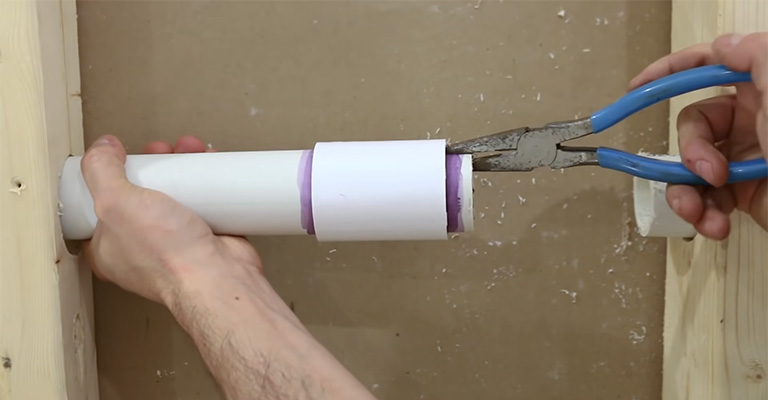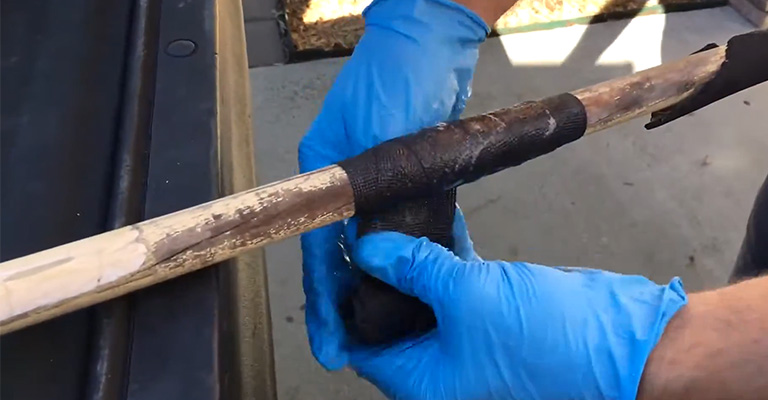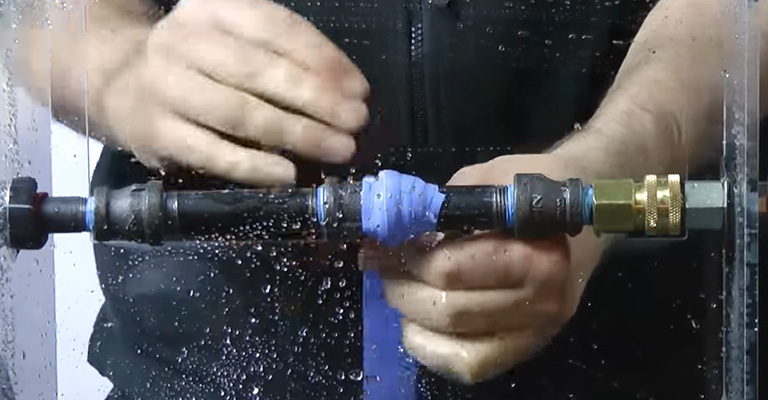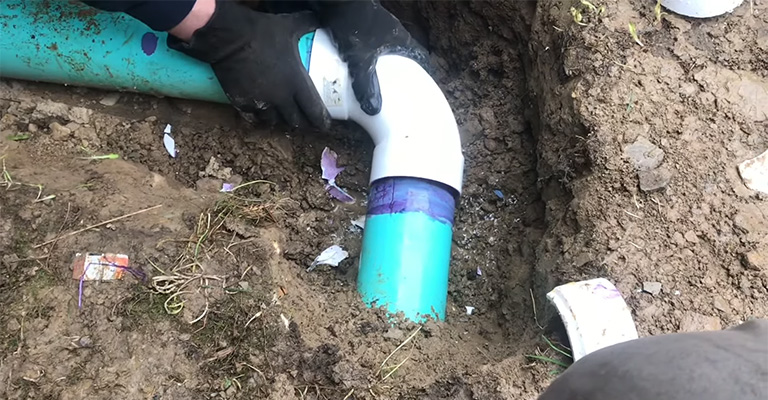Plastic pipes are a popular choice for plumbing and other household projects due to their durability and cost-effectiveness.
However, even the most durable materials can become damaged over time, and plastic pipe threads are no exception.
If you’re dealing with damaged threads on a plastic pipe, don’t worry – they can be repaired with the right tools and techniques.
This guide will show you how to repair damaged plastic pipe threads, including what materials and tools you’ll need and step-by-step instructions for completing the repair.
Can You Repair Plastic Threads?
Yes, it is possible to repair plastic threads. The process typically involves using a thread repair kit, which includes a tapping tool and thread inserts.
The damaged threads are cleaned and then tapped with the tool to create new threads. The thread inserts are then inserted into the newly created threads, effectively repairing the damaged area.
It’s important to note that the repair process will depend on the type and extent of the damage, and it is always better to consult with a professional if you are not comfortable with the repair process.
Things To Consider When Repairing Damaged Plastic Pipe Threads

Restoring plastic pipe threads requires consideration of some factors. Here they are:
Type Of Damage
To fix the damage, you should first determine what type of leak your pipe has. As an example, there can be a partial beam breakage, a puncture, a crack, or a corrosion leak.
Depending on the type of damage, you may need to choose a different repair method. It is, therefore, essential to determine the extent of the damage first.
Type Of Pipe
If you need to replace a damaged section of pipe, check the type of pipe that has been damaged. In contrast to other pipe materials, PVC is lightweight, corrosion-resistant, and easy to install.
As well as the ability to handle pressure, stress, and the environment, there are other characteristics to consider.
Accessibility

In some cases, it can be challenging to reach the damaged area using a specific method because it is located in some difficult places. It is, therefore, important to check the location of your damaged area before choosing your repair method.
We recommend contacting a professional instead of fixing the damaged area yourself if it is located somewhere you cannot reach. As a result, your pipe will be even more damaged.
Safety
Your safety should always come first, not that of the pipe. It is advisable to be careful while working around damaged areas but remember to wear safety glasses and gloves first.
Make sure you thoroughly inspect your tools once to prevent any unwanted situations from occurring.
Repairing Damaged Plastic Pipe Threads: Different Methods Explained
Various methods can be used to repair damaged plastic pipe threads.
I have outlined the 5 most efficient and effective solutions to repair PVC for you with ease and efficiency.
You can repair damaged plastic pipe threads by following these steps:
1. Fiberglass Wrap

It is possible to use this repair method to slow the damage to plastic pipes and buy some time before they need to be replaced if you seek a temporary solution to leaky plastic pipes.
The water-activated resin under the fiberglass tape hardens and covers the leak easily and effectively. Using fiberglass wrap is as easy as following these steps:
- Cleaning the damaged area should begin with a damp cloth.
- As soon as the pipe is wet, wrap fiberglass wrap around the pipe thread.
- You must wait 15 minutes for the resin to activate once the wrapping is complete.
It is possible to create a more lasting repair on the plastic pipe thread leakage by using fiberglass resin cloth. Repair damaged areas with fiberglass resin cloth by following these steps:
- Make sure the leakage area is cleaned with a clean rag.
- Make sure the surface is sanded lightly and gently to build a strong adhesive surface.
- The damaged thread area should now be wrapped with fiberglass resin cloth.
- The resin can be dried and hardened using UV light or direct sunlight.
2. Epoxy
This viscous liquid can repair PVC leaks and leaking threaded PVC joints. PVC damage can be easily repaired using this product. You can use epoxy in the following ways:
- Cleaning and drying the damaged thread of your plastic pipe are the first steps.
- Avoid letting water get close to the damaged area.
- You need to mix the viscous liquid according to the directions in the manual.
- After applying the solution to the damaged or leaking part of the PVC, leave it for at least 10 minutes.
- Then, check the water tap to see if there is still a leak after the solution has dried.
3. Silicone And Rubber Repair Tape

If you’re experiencing minor leaks, this method can be helpful. As long as these tapes are wrapped tightly around the plastic pipe threads, they will stick well and create a strong seal.
However, other repair tapes stick to the PVC directly instead of silicone or rubber. To repair damaged plastic pipe threads with silicone and rubber repair tape, follow these steps:
- Around the leak, wrap silicone tape and rubber tape.
- Cover tape over the leak and make sure it is evenly applied.
- Before using the PVC thread, ensure the tape is securely fastened.
4. Rubber And Hose Clamps
Like silicone and rubber repair tape, you can also fix small leaks in your plastic pipe thread with rubber and hose clamps. In this method, the damaged thread can be repaired as follows:
- You should wrap the rubber tape around the affected thread area.
- It is now time to separate the clamps. Using hose clamps, secure the threads around the damaged area.
- Rubber seals and hose clamps need to be tight and strong.
Note: Rubber tape will eventually lose its stickiness and leak, making this method temporary.
5. Replacing PVC Pipes

Repairing a pipe damaged beyond repair may not be possible. You may also need to replace the whole pipe if you cannot find a permanent or stronger repair.
You must turn off the main water supply line before you begin the replacement process. The following steps will show you how to replace PVC thread:
- The damaged thread area should be cut with a hacksaw blade or ratchet cutter about an inch in both directions.
- The pipe should be completely dry after removing all the water.
- The old, damaged pipe should be cut out and the new pipe threaded into the old hole.
- Once the new pipe is fitted into the hole properly, lock it into place with the existing PVC thread.
- Then, paint the new fittings and the existing pipe with PVC primer solution.
- You should use glue once again around the exposed old pipe area and inside the new fitting.
- To glue the existing thread into the fitting, twist it into place using the twisting motion.
- The last step is to hold the pipe in place for 10 to 15 minutes so the glue can dry, and the old pipe can be attached to the new fitting.
What Causes Damaged Plastic Pipe Threads?
BSP parallel threads are used mainly by plastic pipework to keep thread diameters constant. The female pipe threads in PVC connect the male pipe thread to the female pipe thread. Multiple factors can cause plastic pipe threads to become damaged:
Poor Installation
In the improper installation, you will experience leaks due to incorrectly selected thread tape. Moreover, it is crucial to ensure that all thread connections are tightly sealed and evenly secured.
Not Follow A Straight Line To Cut The Pipe Threads
There may be a need to cut threads when repairing damaged or old ones. When you don’t cut the pipe straight, the new pipe may not fit evenly and leak somewhere in the joint.
Freezing Temperatures
Even though a PVC pipe threader is freezing-resistant, your PVC pipes can still be damaged by freezing temperatures. In areas with frozen temperatures, you should cover your pipes with material to prevent heat loss and damage.
Using Wrong Thread Tape
When you pull the tape tightly to create a tight seal on the plastic pipe, the wrong tape won’t provide enough stickiness. Since Teflon Pipe Tapes can stick to virtually any surface, including plastic, they are perfect for wrapping pipes.
Using Damaged Threads
It won’t be possible to seal a pipe with damaged threads. You will likely find leaks despite carefully wrapping the damaged thread around the pipe.
Tightening The Pipe Too Much
Make sure to gently tighten the tape around the thread using pliers or a wrench after you’ve wrapped it around it. If you tighten the tape too much, the plastic might split, and the pipe might be damaged.
Final Words
Connecting or connecting pipes to other plumbing fittings is made possible by threads on pipes. It is possible, however, for the threads to wear out with time.
If the pipe threads are damaged, repair them as soon as possible to avoid a major disaster. When threads are damaged, minor leaks can become major leaks with time, resulting in increased water costs and property damage.
There is a wide range of materials used in the making of pipes. Some things are more challenging to fix than others. Pipe material toughness determines how sturdy the pipe is. The softer copper pipes are, for example, compared to steel pipes.
This makes repairing threads on copper pipes much more accessible than on steel ones. It doesn’t matter what material the pipe is made of; the repair process is the same.







